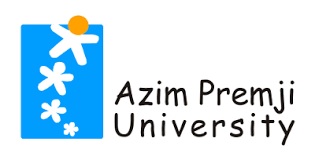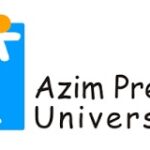
| University | Azim Premji University |
| Exam | National Entrance Test |
| Programme | Undergraduate (UG) |
| Download | Sample Question Paper |
| Document Type | |
| Official Website | https://azimpremjiuniversity.edu.in/ |
Azim Premji University UG National Entrance Test Sample Question Paper
The sample questions for the National Entrance Test might be useful for you to get an idea of the Undergraduate programme test pattern.
Download Azim Premji University PG National Entrance Test Sample Question Paper Here
Download Azim Premji University UG Entrance Test Sample Question Paper
| UG National Entrance Test Sample Question Paper 1 | Download Here |
| UG National Entrance Test Sample Question Paper 2 | Download Here |
| UG National Entrance Test Sample Question Paper 3 | Download Here |
| UG National Entrance Test Sample Question Paper 4 | Download Here |
| UG National Entrance Test Sample Question Paper 5 | Download Here |
| UG National Entrance Test Sample Question Paper 6 | Download Here |
Azim Premji University UG Entrance Test Sample Questions
Section 1 – Reading Comprehension
Directions for Questions 1-18:
Read both the passages below carefully and answer all the questions that appear after each passage.
Passage 1:
“The water was as clear as glass till 20 years ago, when the drains were cleaner. We could see coins at the bottom of the river. We could drink directly from the Yamuna,” says fisherman Raman Haldar, scooping a cupped palm into the muddy waters, bringing it near his mouth to emphasize the point. Seeing our mortified look, he lets it run down his fingers with a wistful laugh. In today’s Yamuna, plastics, foil wrappers, muck, newspapers, concrete debris, cloth scraps, slush, rotting food and dead flowers from puja offerings, wandering coconuts, chemical foam and water hyacinth offer up a dark reflection of the capital city’s consumption. (Para 1)
The Yamuna flows through the National Capital Territory for 22 kilometres, 1.6% of the river’s length. But the wastes and poisons emptied into that little stretch account for close to 80% of all pollution in the 1,376-kilometre river. Acknowledging this, the monitoring committee report of the National Green Tribunal (NGT) in 2018 pronounced the river in Delhi a ‘sewer line’. (Para 2)
The resulting severe depletion of oxygen levels in the water causes large-scale deaths of fish. Last year, thousands of fish were found dead at the Kalindi Kunj Ghat on the southern stretch of the river in Delhi. For a river ecosystem to survive, it needs a Dissolved Oxygen (DO) level of 6 and above. Fish require a DO level of at least 4-5. In the Delhi part of Yamuna, the DO is between 0 to 0.4,” says Priyank Hirani, director of the Water-toCloud project of the Tata Centre for Development at the University of Chicago. The project maps real-time pollution in rivers. (Para 3)
At the Ram Ghat bank, 52-year-old Haldar says, “I moved here from Kalindi Kunj Ghat three years ago. There’s no fish there, earlier there was plenty. Only some catfish remain now. Quite a few of these are dirty and cause allergy, rash, fever and diarrhoea,” he says, untangling a puffy handmade net. Unlike other species that live deeper in the water, the catfish is able to float to the surface and breathe, and so survives better than the others. Predators in this ecosystem, explains Delhi-based marine conservationist Divya Karnad, concentrate toxins in their body because of eating fish lower down in the food chain exposed to those poisons. “So, people eating the scavenger-carnivore catfish suffer reactions.” Haldar’s sons, unable to take up his occupation, sell mobile phone accessories and momos for a living. Nearby, 35-year-old Sunita Devi says her fisherman husband Naresh Sahni is away, seeking work as a daily labourer. (Para 4)
Nearly 87 per cent of India’s fish catch potential is available within waters of a 100-metre depth. Most of that is within reach of the country’s fishing communities. It fosters not just food, but also daily lives and cultures. “Now you’re breaking the small-scale economy of the fishers,” points out Pradip Chatterjee, head of the National Platform for Small Scale Fish Workers. “They supply local fish to local markets. If they don’t find fish, they will bring it from faraway places, using transport which aggravates the crisis.” Increased use of groundwater too requires more energy and interferes with the water cycle. “Water bodies will get affected, and rivers won’t get recharged.
Still more energy, from conventional sources, will be needed to fix this and get clean, potable water from the river. We are breaking nature-based economies forcibly, and putting labour, food and production into a corporate cycle that is energy and capital intensive.” A climate crisis, with its fluctuations in rainfall and temperatures, adds layers to the Yamuna problem, says senior environmental consultant Dr. Radha Gopalan, since the quantity and quality of the water is compromised. (Para 5)
1) According to the information in the passage, which of the following is true:
A) The waste in the Jamuna accounts for close to 80% of the total pollutants in the National Capital Region.
B) Nearly 40% of the waste in the Yamuna is emptied into it during its flow through the National Capital Region.
C) The National Capital Region accounts for most of the waste in the Yamuna.
D) The Yamuna runs through the National Capital Region for 1376 kilometres.
2) According to the passage:
A) The Dissolved Oxygen Level of the Yamuna is above 6.
B) The Yamuna waters dissolve oxygen at the rate of 4 or 5.
C) The Dissolved Oxygen Level is one of the ways in which scientists check for whether water can sustain fish.
D) Fish do not survive in water with a DO level of 6 and above
3) According to the passage, which of the following is a likely chain reaction?
A) Catfish eat other carnivores –> humans eat the same carnivores –> humans fall sick
B) Humans eat small fish –> humans fall sick
C) Catfish eat small fish –> humans eat catfish –> humans fall sick
D) Small fish eat catfish -> humans eat catfish -> humans fall sick
4) What is the main idea of the passage?
A) The Yamuna is polluted and therefore the fish in it die.
B) The pollution in the Yamuna causes the death of fish, a shortage of edible fish and loss of livelihoods.
C) Global warming acts on the Yamuna waters to cause the loss of livelihoods.
D) The pollution in the Yamuna is caused by a shortage of rainwater.
5) The author of this passage is likely to support:
A) Policies that encourage the transportation of fish from seaports to the National Capital Region
B) Policies that encourage consumption of local food produce
C) Policies that encourage the use of the Yamuna banks for religious purposes
D) Policies that limit employment potential for those who previously used to be fishermen
Have a question? Please feel free to reach out by leaving a comment below

![Resonance National Entrance Test [ResoNET] 2023 Sample Paper Resonance-Logo](https://www.recruitmentzones.in/wp-content/uploads/2023/02/Resonance-Logo-150x95.jpg)


![All India Medical Scholarship Entrance Test [AIMSET] 2022 Sample Paper AIMSET-Logo](https://www.recruitmentzones.in/wp-content/uploads/2022/06/AIMSET-Logo-150x150.jpg)
